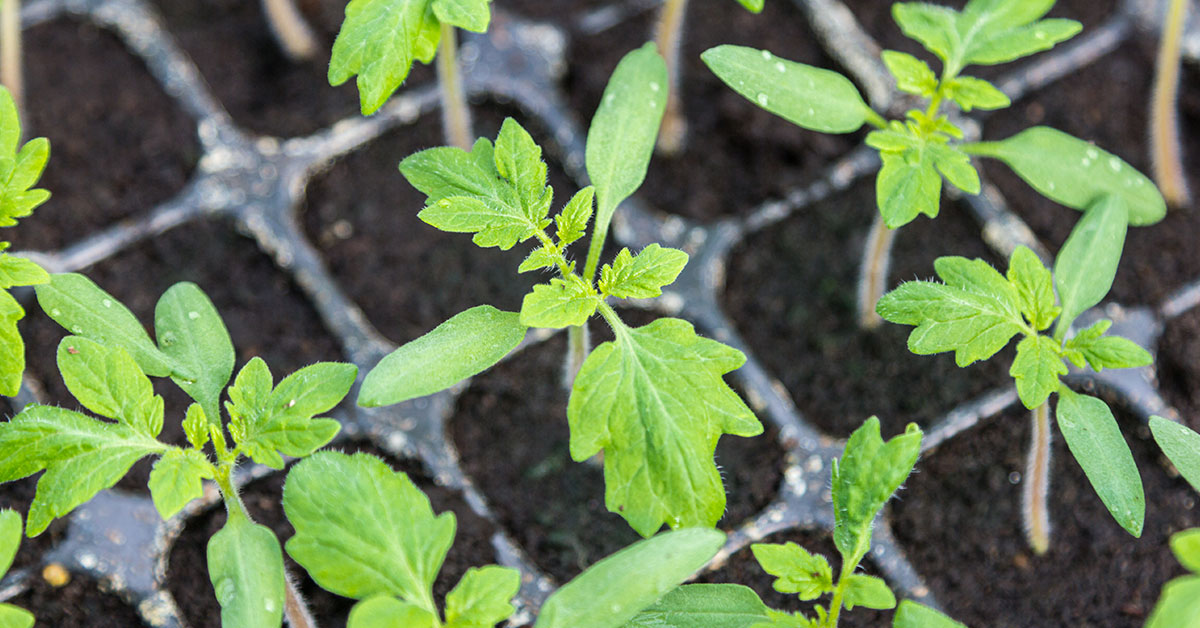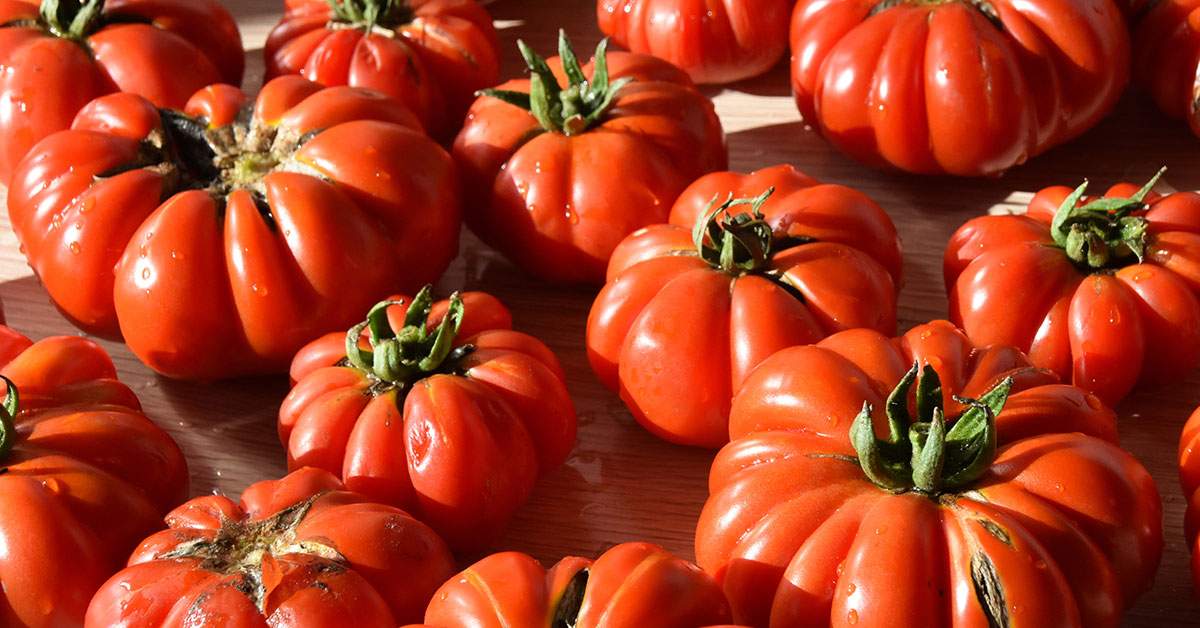Growing tomatoes from seeds is a rewarding experience that can yield a plentiful harvest of delicious, homegrown tomatoes. Whether you are a beginner gardener or a seasoned pro, growing tomatoes from seeds is a fun and rewarding way to enjoy homegrown tomatoes. From selecting the right variety of tomatoes to proper planting techniques. We will provide an overview of the steps involved in growing tomatoes from seed. With careful planning, you will soon be enjoying the delicious flavor of homegrown tomatoes.
Starting tomatoes from seed
Tomatoes are a great crop to grow indoors, and the best time to start growing them from seed is typically 4 to 6 weeks before your last expected frost. During this time, you can start the seeds indoors in peat pots or other containers, and then transplant them outdoors when the weather warms up. The process is fairly simple:
- Gather Supplies: Tomato Seeds, Potting Soil, Containers, Labels
- Prepare the Containers: Fill each container with potting soil and moisten with water.
- Plant the Seeds: Place two to three seeds in each container, about 1/4 inch deep.
- Label the Containers: Label each container with the tomato variety and the date of planting.
- Provide Heat and Light: Place the containers on a heat mat to maintain a minimum soil temperature of 65 degrees Fahrenheit and provide 12-16 hours of light per day.
- Water Regularly: Water the soil when it is dry to the touch.
- Thin the Seedlings: When the seedlings are 2-3 inches tall, thin to one plant per container.
- Hardening Off: When the seedlings have several sets of leaves, gradually introduce them to outdoor conditions.
- Transplanting: Once all danger of frost has passed, carefully transplant the seedlings into the garden.
Tomatoes like plenty of sun. They should be placed on a sunny windowsill or in a south-facing window. Make sure to keep the soil moist and keep an eye on the temperature, as tomatoes prefer temperatures between 65 and 85 degrees Fahrenheit.
The best soil for growing tomatoes from seed indoors is a light, well-draining mix. A combination of potting soil and compost is ideal, providing the necessary nutrients and moisture for the young plants. Before planting, the soil should be moistened and worked into a fine texture. Make sure the soil is not too heavy or dense, as this will make it difficult for the seeds to sprout.
If you are using a container, make sure it is large enough for the plant to grow, as tomatoes can become quite large. Lastly, make sure the container has enough drainage holes to allow excess water to escape and provide proper aeration. Following these tips will ensure the best results when growing tomatoes from seeds indoors.
When To Transplant Tomato Seedlings Outdoors
When transplanting tomato seedlings outdoors, the timing should be based on the weather conditions and the hardiness of the seedlings. Late spring is usually the best time to transplant tomato seedlings after the danger of frost has passed and the soil has had a chance to warm up.
Make sure to look for signs of hardiness in the seedlings before transplanting, such as strong stems and bright green foliage. This will ensure that the transplanted seedlings will be able to withstand the cooler temperatures of the outdoors. Additionally, be sure to water the seedlings well before transplanting to help them adjust to their new environment.
Hardening off tomato seedlings before planting outdoors is an important part of their growth process. This process gradually acclimates the young plants to the outdoor environment, helping to ensure the survival of the seedlings. To harden off the seedlings, start by placing the tray of seedlings in a sheltered location outdoors.
Then, each day, increase the amount of time they are exposed to the outdoor elements. This should be done gradually over the course of 7-10 days. During this process, be sure to check the soil moisture and water as needed. Additionally, provide protection from strong winds, heavy rains, and extreme temperatures. By the end of the hardening-off period, the seedlings should be ready to plant outdoors!
Transplanting and care
When caring for freshly transplanted tomato seedlings outdoors, it is important to take into account the environment and provide the seedlings with the best possible conditions for optimal growth. Plant the seedlings in an area that receives at least 6-8 hours of direct sun per day and in soil that is well-draining and nutrient-rich.
Provide the seedlings with a consistent and generous amount of water, but avoid over-watering. Water deeply to encourage deeper roots./ Mulch the area around the seedlings with straw or shredded leaves, straw, or woodchips to help retain moisture and keep weeds away. Finally, be sure to check the seedlings regularly for pests and diseases and treat them accordingly.
Pests and diseases can be a major concern for newly transplanted tomato seedlings outdoors. Many common pests can attack the plants, such as aphids, spider mites, and whiteflies. While fungal and bacterial diseases can be spread by splashing water or wind-borne spores.
To prevent damage, it is important to inspect plants for signs of pests or diseases regularly. Take action promptly if symptoms are noticed. Proper spacing of plants and keeping the area clear of weeds and debris can also help reduce the risk of pest and disease problems. Furthermore, using mulch and proper watering techniques can help reduce the spread of diseases.
Finally, using organic pest and disease control methods, such as companion planting and beneficial insects, can help protect young tomato plants from pests and diseases.
Pruning freshly transplanted tomato seedlings outdoors is an important step towards a healthy and productive harvest. Before pruning, make sure the plant is well-hydrated, as this will help the new cuttings heal quickly.
Begin by removing any dead or diseased stems and foliage. Then, select the strongest main stem and remove all side shoots and stems growing from the main stem. Prune the remaining side shoots and stems back to two or three leaves. This will help the plant focus its energy on growing the main stem and producing flowers and fruit. Finally, prune away any lower leaves that are touching the ground or any nearby objects. This will help prevent disease and pests from attacking the plant.













